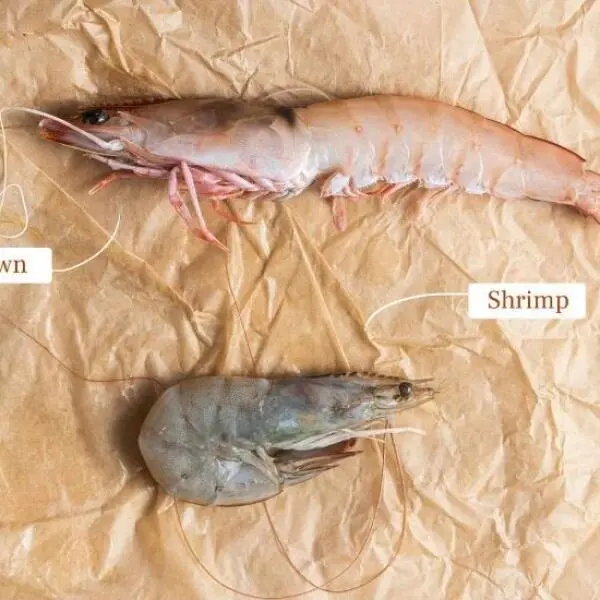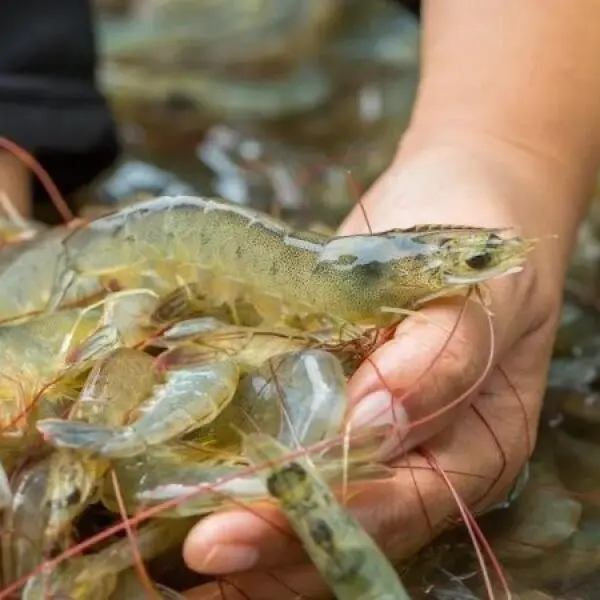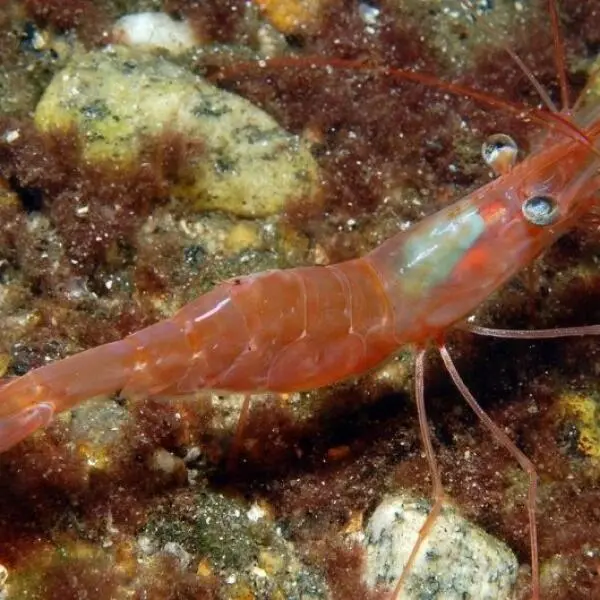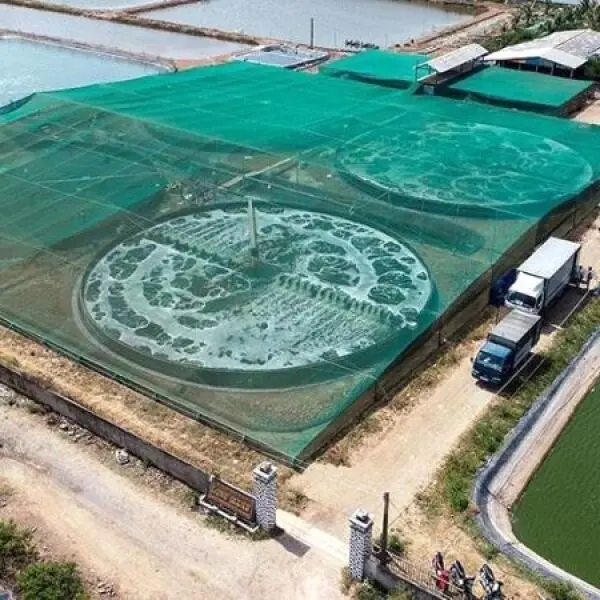
White shrimp (Litopenaeus setiferus) stands as one of the most commercially significant seafood species globally, captivating both culinary enthusiasts and marine biologists alike. This comprehensive guide delves into everything you need to know about these remarkable crustaceans, from their distinctive characteristics to their crucial role in global aquaculture and cuisine.
Understanding White Shrimp: Species and Characteristics
White shrimp, scientifically known as Litopenaeus setiferus and sometimes referred to as Atlantic white shrimp, possess unique characteristics that distinguish them from other shrimp varieties. Their bodies showcase a stunning bluish-gray coloration, complemented by a subtle greenish tinge on their tails and a distinctive yellow band adorning their abdomen.
One of their most remarkable features is their exceptionally long antennae, which extend an impressive 2.5 to 3 times the length of their bodies. These antennae serve as sophisticated sensory organs, helping them navigate their environment and detect potential threats. The species also features a pronounced rostrum—a horn-like projection extending from their head—that reaches beyond their eyes, serving as another distinguishing characteristic.
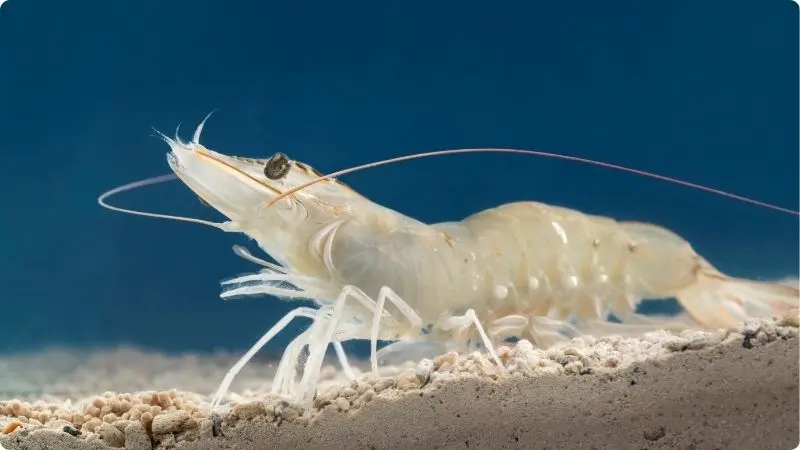
White shrimp can extend an impressive 2.5 to 3 times the length of their bodies
Size Classifications and Growth Patterns
Understanding white shrimp sizes is crucial for both commercial and culinary applications. These crustaceans can achieve impressive lengths of 7-8 inches, with females typically growing larger than their male counterparts. In commercial markets, white shrimp are categorized by size using a count-per-pound system:
- Jumbo: 21/25 shrimp per pound
- Large: 31/40 shrimp per pound
- Medium: 41/50 shrimp per pound
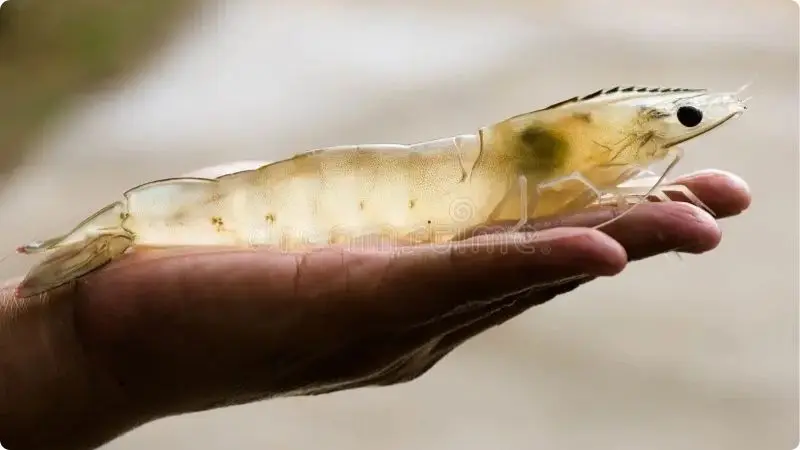
White shrimp can achieve impressive lengths of 7-8 inches
Natural Range and Habitat of White Shrimp
White shrimp demonstrate a clear preference for specific environmental conditions, thriving in shallow coastal waters along the Atlantic and Gulf Coasts. Their range extends from New York down to Florida along the Atlantic seaboard, and continues from Florida to Campeche, Mexico, in the Gulf of Mexico.
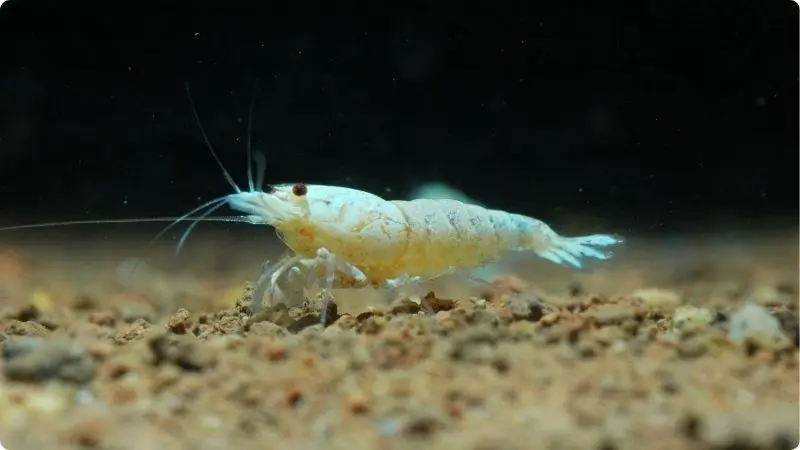
White shrimp prefer water depths up to 100 feet in environments with low to moderate salinity levels
These adaptable creatures prefer water depths up to 100 feet, flourishing in environments with low to moderate salinity levels. Juvenile white shrimp particularly favor estuarine nursery areas, where muddy substrates provide both protection and abundant food sources. Adult populations typically move offshore for spawning, showing a particular affinity for regions with extensive marsh systems, such as Louisiana's Mississippi River Delta.
Life Cycle and Reproduction
The life cycle of white shrimp is both fascinating and rapid, contributing significantly to their commercial viability. The reproduction process begins with internal fertilization, where male shrimp transfer spermatophores to females. A single female can produce an astounding 500,000 to 1 million eggs, which are fertilized upon release near the ocean floor.
Spawning patterns vary by region:
- Gulf of Mexico: March to September
- Carolinas: May to September
The larvae emerge within 24 hours of egg release and embark on a journey to estuarine nurseries in early spring. As juveniles, they experience rapid growth, sustaining themselves on a diet of detritus, algae, and microorganisms. Sexual maturity is reached when they attain approximately 5½ inches in length, at which point they return to the ocean to complete their life cycle.
Commercial Importance and Farming Practices
The commercial significance of white shrimp cannot be overstated, with recent data showing impressive harvest numbers. In 2022 alone, the industry recorded a harvest of over 119 million pounds, generating revenue of $232 million. This substantial economic impact has driven significant developments in shrimp farming practices, particularly with the Pacific white shrimp (Litopenaeus vannamei) variety.
White shrimp farming, particularly of the Pacific white shrimp (Litopenaeus vannamei), has evolved into a cornerstone of global aquaculture. The industry's success stems from the species' rapid growth rate, adaptability to controlled environments, and reliable reproduction in captivity.
Modern farming practices emphasize sustainability through:
- Recirculating aquaculture systems for white shrimp (RAS)
- Modern feed management techniques for white shrimp
- Environmental impact reduction strategies
However, challenges persist, including habitat destruction and water pollution, highlighting the need for continued regulatory oversight and sustainable practices.
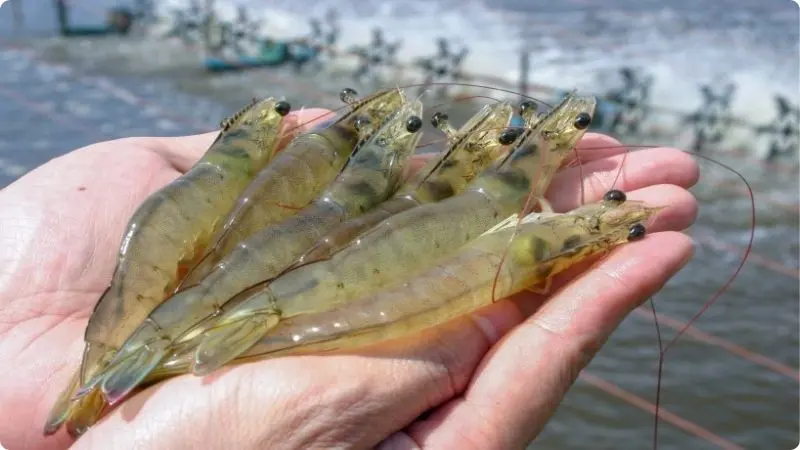
Modern shrimp farming ususe recirculating aquaculture systems (RAS) to minimize environmental impact while maximizing production efficiency
Role of White Shrimp in The Ecosystem and Their Environmental Impact
White shrimp serve as crucial components of their marine ecosystems, functioning both as predators and prey. Their omnivorous feeding habits contribute to nutrient cycling within estuarine environments, while their abundance makes them an essential food source for numerous marine species, including:
- Blue crabs
- Various finfish species
- Killifish
Their short life cycle of less than two years, combined with their significant population numbers, establishes them as vital links in coastal food webs.
How White Shrimp is Used in Cooking and Its Nutritional Profile
The culinary versatility of white shrimp makes them a prized ingredient in kitchens worldwide. Their mild, sweet flavor profile and tender texture make them ideal for various cooking methods and dishes. A standard 3-ounce serving provides impressive nutritional benefits:
- 20 grams of protein
- Low fat content
- Indispensable minerals including calcium and magnesium
Chefs and home cooks alike appreciate their adaptability in dishes ranging from traditional shrimp boils to sophisticated seafood stews, with their meat readily absorbing the flavors of accompanying seasonings and sauces.
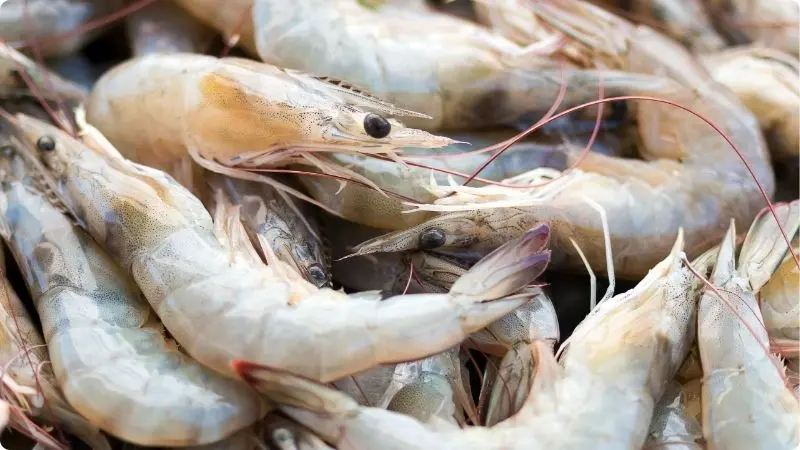
The culinary versatility of white shrimp makes them a prized ingredient in kitchens worldwide
Sustainable Management and Future Outlook for White Shrimp
The long-term sustainability of white shrimp populations depends on careful management practices. Present conservation efforts comprise:
- Mandatory licensing for commercial shrimping in federal waters
- Seasonal fishing closures to protect spawning populations
- Required use of turtle excluder devices (TEDs) and bycatch reduction devices (BRDs)
These measures help ensure the continued viability of white shrimp populations while minimizing impact on other marine species.
Conclusion
White shrimp represent a remarkable example of a species that successfully bridges ecological importance with commercial value. Their rapid growth cycle, adaptability to farming conditions, and significant nutritional benefits make them an invaluable resource in both wild fisheries and aquaculture operations. As the industry continues to evolve, sustainable management practices will become increasingly crucial in maintaining healthy populations for future generations.
Understanding white shrimp's biology, habitat requirements, and commercial significance helps us appreciate their role in marine ecosystems and global food security. Whether encountered in the wild or in farming operations, these creatures continue to fascinate researchers and provide sustenance for millions worldwide.
Related Articles
Shrimp and Prawns: Unveiling the Differences and Similarities
If you’ve ever encountered a seafood menu or a bustling fish market, you’ve likely seen the terms ...
Want to learn more about type of shrimp? From ocean to plate
Shrimp is a versatile and beloved seafood staple, but few realize the incredible variety of shrimp ...
Tired of pool scale? What causes white spots in your pool?
Pool scale is a common issue for pool owners, causing unsightly deposits and potentially damaging ...
All About Pink Shrimp: The Fascinating World of Pink Shrimp
Pink shrimp (Farfantepenaeus duorarum) stands as one of the most valuable and fascinating marine ...
How big can tiger shrimp grow?
Tiger shrimp , including the highly sought-after black tiger shrimp, is a lucrative species in the ...
How Can We Make Shrimp Farming More Sustainable?
The shrimp farming industry in Vietnam has emerged as a cornerstone of the nation's aquaculture ...

